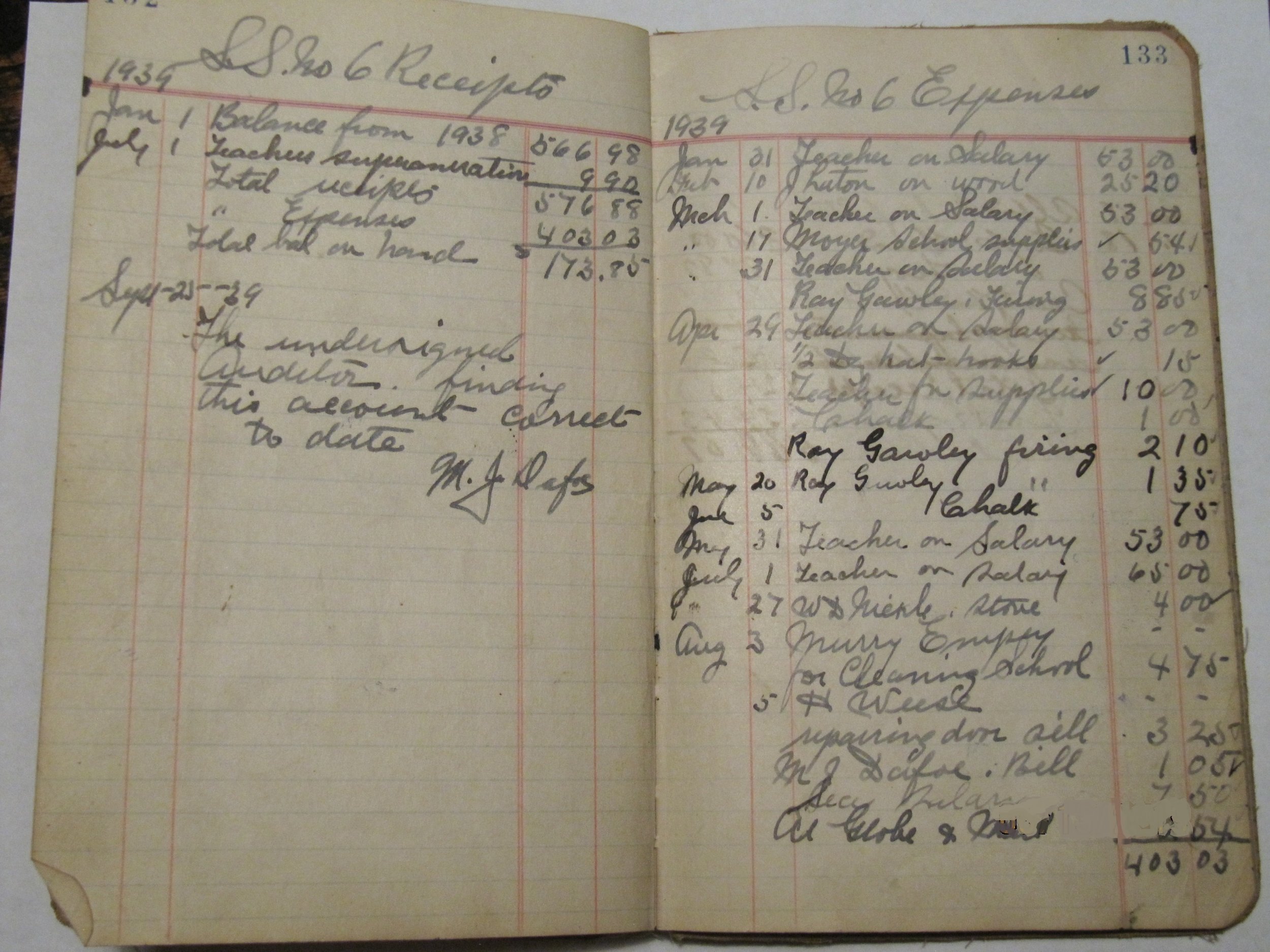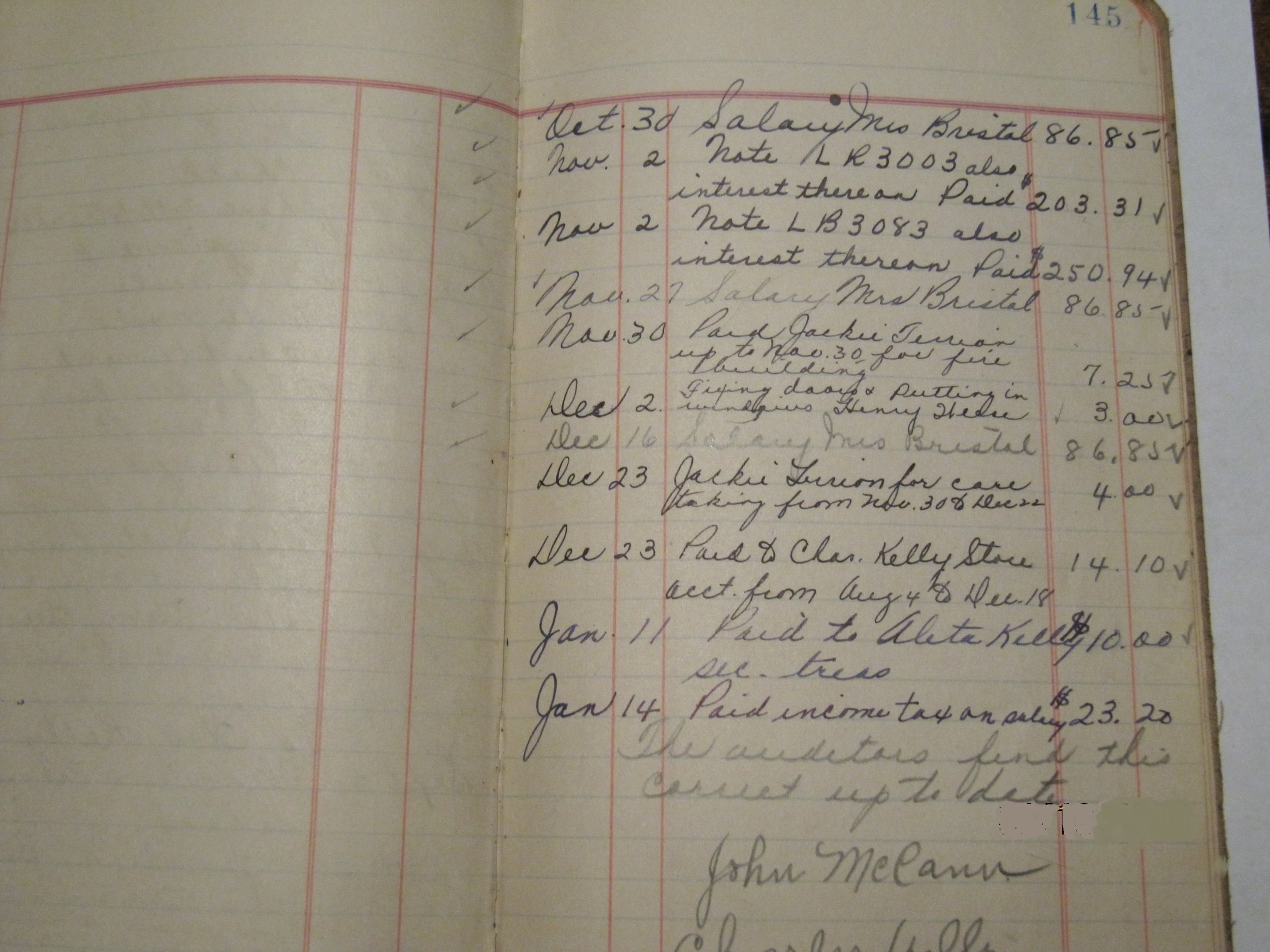Malone Treasure Finds Its way Home.....
/Thanks to the thoughtfulness and kindness of Sandra Cain of Kanata, Ontario, a piece of Malone history has returned home, giving us some insight into years gone by. With the Malone school (SS6) accounting book in our hands, we are able to piece together some more details of life in the classroom in the early 1900s.
Sandra Cain writes:
”A couple of years ago my husband and I stopped in at an “antique” shop somewhere along Hwy 7, where, I can not remember. This book was in a pile of books in a wicker basket on the floor and I believe I bought it for about $ 5.00. I was drawn to it because it is an old ledger book and I am an accountant so it was interesting to see how the school’s accounting was done a hundred years ago.
Last weekend I was showing the book to an accountant friend of mine and she was quit taken with it. She commented that it should really be in a museum. She asked if I knew which SS#6 it was for and I said I did not, so we started looking online. She suggested it may be Middleville, and I liked that idea because Middleville is not to far from where I live.
After she left I started doing more serious research and I started looking through the pages more thoroughly and I was able to find a receipt (see photo below) and the one page which actually says “ RR#6 Marmora”, and then I found your website, read about the school and decided that the book should belong to the historical society. I see that you have one ledger already, wouldn’t it be exciting if you managed to get all of them? “
A quick review of the pages reveals some of the school improvements and local tradesmen hired.
1907 - Fred Arthur for fencing, shingling, closets and a flagpole, Bonters for lumber, and W Hughes for cement and nails, Pearces for doors, siding, sash and glass.
1912 - C. McCann for firewood and Wilfred Terrion for carrying in water. Men were hired to light the fire in the morning. Wages were set at $4.00 for the year in 1908, paid to Alex Nickle and F. Terrion. By 1942, that job earned $25.05 for the year, paid to Jackie Terrion and Fred Hill.
Cleaning, of course, was left to the only woman hired (other than teachers) who was Mrs. Fox, in 1918. School supplies included black polish for the wood stove, a Bible, the Evening Telegram, some seats in 1907, window shades in 1908, hat hooks, and, of course blackboards, chalk and paper.
The biggest expense was the teacher. In 1907, three teachers shared a total sum of $316.32, which was almost 54% of the total budget. By 1920, the cost of the teachers more than doubled to $734.79, being 60% of the income received from a Legislative Grant, a Township Grant and a local “Trustees’ Levy. In 1907 the school also earned $6.00 renting the school to the circus, $13.32 selling Christmas Trees and $17.75 from “Social Receipts”.




































